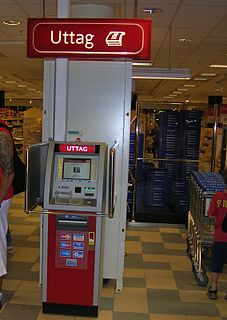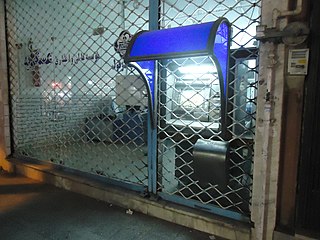 W
WAn automated teller machine (ATM) or cash machine is an electronic telecommunications device that enables customers of financial institutions to perform financial transactions, such as cash withdrawals, deposits, funds transfers, or account information inquiries, at any time and without the need for direct interaction with bank staff.
 W
WThe ATM Industry Association (ATMIA), originally the ATM Owners Association, was established in 1997 in the United States as a global nonprofit trade association to service an industry that built around the global growth of the ATM.
 W
WA Bitcoin ATM is a kiosk that allows a person to purchase Bitcoin by using cash or debit card. Some Bitcoin ATMs offer bi-directional functionality enabling both the purchase of Bitcoin as well as the sale of Bitcoin for cash. In some cases, Bitcoin ATM providers require users to have an existing account to transact on the machine.
 W
WThe IBM 3624 was released in 1978 as a second-generation automatic teller machine (ATM), a successor to the IBM 3614. Designed at the IBM Los Gatos lab, the IBM 3624, along with the later IBM 4732 model, was manufactured at IBM facilities in Charlotte, North Carolina and Havant, England until all operations were sold to Diebold, tied to the formation of the InterBold partnership between IBM and Diebold. Comparable ATM units marketed by other companies at the time were the Diebold TABS 9000 and NCR 50xx series.
 W
WA Lebanese loop is a device used to commit fraud and identity theft by exploiting automated teller machines (ATMs). In its simplest form, it is a strip or sleeve of metal or plastic which blocks the ATM's card slot, causing any inserted card to be apparently retained by the machine, allowing it to be retrieved by the fraudster when the card holder leaves.
 W
WAutomated teller machines (ATMs) are targets for fraud, robberies and other security breaches. In the past, the main purpose of ATMs was to deliver cash in the form of banknotes, and to debit a corresponding bank account. However, ATMs are becoming more complicated, and they now serve numerous functions, thus becoming a high priority target for robbers and hackers.
 W
WTillie the All-Time Teller was one of the first ATMs, run by the First National Bank of Atlanta and considered to be one of the most successful ATMs in the banking industry. Tillie the All-Time Teller had a picture of a smiling blonde girl on the front of the machine to suggest it was user-friendly, had an apparent personality, and could greet people by name. Many banks hired women dressed as this person to show their customers how to use Tillie the All-Time Teller.